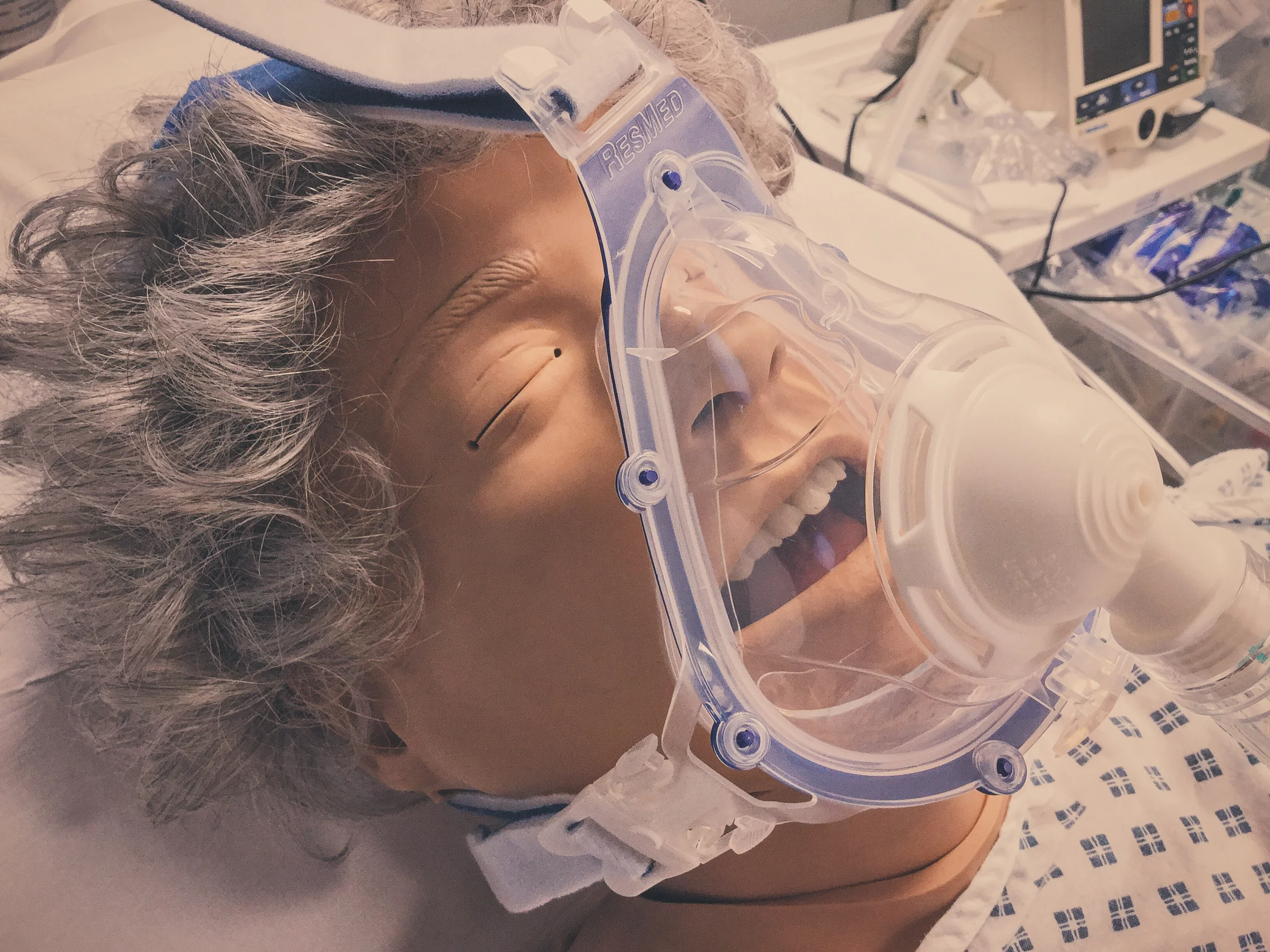#SimBlog: Drug Anaphylaxis
“You are asked to review a 14 old girl in the ED who is in pain with an infected toe. The orthopaedic team have commenced IV Augmentin. She develops difficulty in breathing and becomes less responsive during your assessment...”
Observations
A – Stridor
B – RR 30, Sats 91% in air, bilateral wheeze
C – HR 130, BP 70/50
D – BM 6
E – Temp 37.5°C
Clinical Findings
Urticarial rash developing over torso
Penicillin allergy noted on drug chart
Why We Simulated?
Although foods are the top cause of anaphylaxis in children, drugs are often overlooked as the second most common. Penicillins are amongst the leading causes of drug induced anaphylaxis, including fatalities. Therefore, when ‘penicillin allergy’ is written on a patients chart, it is important to clarify what this reaction was and make a clinical decision based upon this.
Despite consensus that intramuscular (IM) adrenaline should be the first line treatment for anaphylaxis, several studies indicate that it is either given after a considerable delay or not at all during the acute phase.
A retrospective study over 2 years of 218 children who presented to a Children’s ED with clinical features of anaphylaxis, confirmed a reluctance to administer adrenaline. This was demonstrated by paramedics who gave it in only 36% of cases and by parents of children with known allergies-delivery rates reaching 41%.[1]
So why is there this hesitancy in giving intramuscular adrenaline?
1. Is adrenaline safe?
Adrenaline reduces mucosal oedema and brings about bronchodilation and vasoconstriction, therefore reversing the life threatening ‘ABC’ features of anaphylaxis. It also blocks the release of further histamine and other inflammatory mediators which drive the anaphylaxis process.
IM adrenaline has been shown to be a safe and effective treatment for anaphylaxis. The majority of dosing errors and cardiovascular adverse reactions occur when adrenaline is incorrectly dosed or given IV.[2]
IV adrenaline on the other hand, should only be administered by those experienced in the use and titration of vasopressors in their normal clinical practice and is reserved for anaphylaxis in profoundly hypotensive patients or patients in cardiac or respiratory arrest who have failed to respond to IV volume replacement and multiple IM doses of adrenaline.[2]
2. IM administration is less common practice than other routes & therefore an unfamiliar technique
IM adrenaline via auto injector should be given into the anterolateral thigh. To prevent dosing errors, our departmental Standard Operating Procedure (SOP) for Anaphylaxis, recommends using an adrenaline auto injector for delivery. These can be found in our Anaphylaxis grab boxes (shown in the picture above) and in the paediatric crash trollies.
During the simulation, we gave participants hands on experience of delivering IM adrenaline using one of our tester pens so that they developed confidence with the technique.
Below is a video showing how to use the Emerade pen which we stock in our department.
3. Other medications in the anaphylaxis algorithm are given preferentially
Salbutamol will address the resultant bronchospasm but will not stop the underlying process. Salbutamol nebulisers are recommended in the algorithm therefore as an adjuvant after adrenaline dosing to consider if wheeze remains a major feature. ]
Antihistamines have no proved clinical effect on the immediate life threatening ‘ABC’ complications of anaphylaxis because they are slow acting and do not prevent the massive release of histamine, therefore having a negligible role in relieving bronchospasm or tackling hypotension due to vasodilation.[3] They are however useful for relieving symptoms of urticaria, nasal congestion and periorbital swelling and preventing relapse.
Steroids have too slow of an onset to matter in the acute phase but a long duration of action; their role being more towards minimising the risk of biphasic reactions over the following 6-72 hours.
We performed this simulation to address these misconceptions and ensure our team knew where to find our Anaphylaxis grab box. We also wanted them to feel confident with delivering intramuscular adrenaline appropriately including "hands on" experience using a tester pen.
Our SOP for Anaphylaxis is a flow diagram which emphasises the importance of early IM adrenaline delivery as well as repeated dosing should the patient remain clinically unstable. It also states children who have had emergency treatment for suspected anaphylaxis should be admitted to hospital under the care of the paediatric medical team.
Those presenting with respiratory compromise need close monitoring for at least 6-8 hours and patients who presented with circulatory instability require close monitoring for 12-24 hours.
These observation periods therefore mean it is unlikely that such a child is discharged from the ED, however if this situation occurs, there is a clear discharge checklist to follow, which includes:
Advice on allergen avoidance and the risk and recognition of a biphasic reaction.
Prescriptions for an adrenaline auto injector, 3 days of cetirizine and prednisolone.
An emergency action plan with patient and parent education on recognising future reactions and how to use the auto injector.
Arranging an allergy clinic follow up.
References:
- Tiyyagura GK, Arnold L, Cone DC, Langhan M. Prehospital Emergency Care. 2014 Jan 1;18(1):46-51. : Paediatric anaphylaxis management in the prehospital setting
- Wood JP, Traub SJ, Lipinski C. World journal of emergency medicine. 2013;4(4):245. : Safety of epinephrine for anaphylaxis in the emergency setting.
- Andreae DA, Andreae MH. BMJ 2009 Jul 10;339:b2489. : Should antihistamines be used to treat anaphylaxis?
Further Reading:
- UpToDate® (needs Athens login): Penicillin allergy
Learning Outcomes
IM adrenaline is the first line treatment for anaphylaxis. Do not delay its administration in this life threatening emergency.
The dose of IM adrenaline in children is age dependent with 3 doses of auto injector pens available. These can all be found in the Anaphylaxis grab boxes and in the paediatric crash trolleys.
Although antibiotic anaphylaxis is rare in children, it is always important to take a full drug allergy history before prescribing antibiotics.
Positive Feedback
Rapidly recognised a significant deterioration in the patient.
Identified the antibiotics as a likely cause of anaphylaxis and stopped the infusion.
Clear verbal handover to senior.








